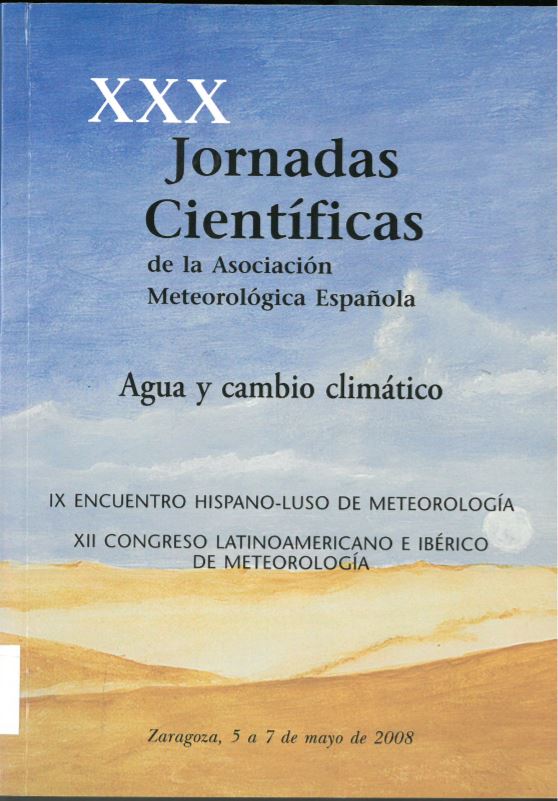DIFERENCIAS ENTRE LOS REANÁLISIS ERA40 Y NCEP/NCAR EN LA VARIABILIDAD ESTRATOSFÉRICA DE LA TEMPERATURA Y DEL VIENTO ZONA
Resumen
Atmospheric reanalyses are useful tools when studies on climate variability are carried out. Among all the existing reanalyses, those from ECMWF and NCEP/NCAR are the most used by researchers in the climate monitoring community. However, although relevant improvements in the realistic performance of atmospheric models have been made, their representations of the stratosphere are still in development, and, therefore, in the corresponding models used for both reanalyses as well. Due to the current interest in studies about coupled stratosphere-troposphere system, this paper deals with the degree of agreement between ERA40 and NCEP/NCAR 40-yr reanalyses in their performance of the temperature and zonal wind variability at the lower stratosphere (up to 10 hPa). For it, by applying the Principal Component Analysis technique to monthly data and considering separately the four seasons in the year, the authors have compared the main five modes of zonal wind and temperature obtained from both databases. Also, in order to contrast the results with those concerning to geopotential variability, an update of a previous study is included Although there is a great agreement in the variability of these variables between reanalyses, some differences have been identified, especially at 50, 20 and 10 hPa, in some seasons. Most of these differences were found in spring, summer and autumn in temperature. Concerning the zonal wind, the first mode of variability shows differences between both reanalyses in the four seasons and at 20 and 50 hPa (and extended at 10 hPa for spring and summer). Briefly, all these differences should be taken into account if results from variability studies carried out with both datasets are compared.Citas
ECMWF/GEO Workshop (2006): “ECMWF/GEO Workshop on Atmospheric Reanalysis”. ECMWF Workshop Proceedings, 135 pp. Kalnay, E. et al. (1996): “The NCEP/NCAR 40-Year Reanalysis Project” Bull. Amer. Meteor. Soc., 77, 3, 437– 471. Peixoto, J.P. and A.H. Oort (1992): “Physics of climate”. Ed. American Institute of Physics, New York, 520 pp. Rico, T. (2007): “Estudio sobre las diferencias entre los reanálisis ERA40 y NCEP/NCAR en su reproducción de la variabilidad estratosférica”. Trabajo Investigación 3º Ciclo , UCM, 141 pp. Serrano, E., T. Rico y B. Ayarzagüena (2008): “Comparación entre los reanálisis ERA40 y NCEP/NCAR en su representación de la variabilidad estratosférica”. 6ª AHPGG, Tomar, Portugal. Uppala, S.M. et al. (2005): “The ERA-40 Reanalysis” Quart. J. R. Meteorol. Soc., 131, 2961-3012. doi:10.1256/qj.04.176

